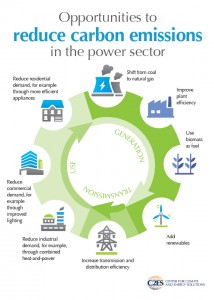One Problem with EPA's Proposed Clean Carbon Plan
By Kira Spanks
 Earlier this month the EPA released the 645-page document that goes into great detail about their plan for clean energy. Just one problem; within those pages the EPA is pushing for more nuclear plants to open across the country. The good news is that the EPA is shutting down a lot of oil and coal fired plants. Nuclear energy however is just as dangerous, if not more so, than the more primitive coal and oil fired plants. Below you will find some points of interest that will help lead you through the EPA’s Clean Carbon Plan Proposal.
Earlier this month the EPA released the 645-page document that goes into great detail about their plan for clean energy. Just one problem; within those pages the EPA is pushing for more nuclear plants to open across the country. The good news is that the EPA is shutting down a lot of oil and coal fired plants. Nuclear energy however is just as dangerous, if not more so, than the more primitive coal and oil fired plants. Below you will find some points of interest that will help lead you through the EPA’s Clean Carbon Plan Proposal.
How Has Nuclear, Coal and Oil-Fueled Energy Affected Us?
1. Communities living near nuclear power plants in Georgia suffer higher rates of cancer and economic desolation.
2. Asthma rates have doubled in US in the past 30 years. In Georgia, 8.2 percent of adults suffer from asthma, according to the Centers for Disease Control and Prevention.
3. Health risks associated with nuclear energy production are significantly increased for female individuals; especially those aged zero to five whose risk is two times as much as their male counterparts. For adult females, the risk is 50% higher.
The Intentions of The Proposal:
1. The Clean Carbon Plan proposal uses the 2005 level of carbon pollution as its baseline and targets to decrease this level of pollution by 30% by the year 2030.
2. The plan proposes to increase the reliance of the United States on alternative, longer lasting and cleaner forms of energy, such as solar, wind and hydroelectric.
3. The plan proposes to provide subsidies for nuclear plants construction which would support about six percent of each state’s energy production from nuclear plants
Negative Effects of Stimulating Nuclear Energy Growth through Subsidies
1. Many people in support of the expansion of nuclear energy technology suggest that the use of clean alternatives would increase energy costs. However, various studies have indicated that the opposite it is actually true. Costs are lowered when using solar, hydroelectric and wind energy. The number of businesses and household are that dependent on nuclear energy is very small; as low as an estimated half percent of the total United States’ electricity supply.
2. The economic value of avoiding retirement of the six percent of nuclear plants per state is not large enough to be necessarily advantageous to the industry.
3. Nuclear reactors are dangerous, uneconomical and can easily be replaced by newer and cleaner ways to generate energy. If the subsidies pass, this requires taxpayers to give money to support decades old technology.
4. Each nuclear plant is required by law to dispel the spent uranium used to generate energy at every two-years. It has released most of the energy through a fission process through which the spent uranium becomes a radioactive waste.
The rule, as reviewed, presents a positive spin on something that could have serious health consequences. The EPA is suggesting that we are heading towards a cleaner emission future, but they are not going far enough to address all of the potential health impacts. It is unrealistic to suggest that all coal, oil and nuclear-fueled power plants be removed immediately and replaced with cleaner methods of energy generation such as wind or hydroelectric. By the year 2030, the proposed date for complete implementation of the rule however, we should have done away with all of these harmful ways to generate power. What will retaining these nuclear plants mean exactly for our local communities, region and the nation?
Speak Your mind!
EPA recently held four public hearings on the rule in Denver, CO, Pittsburgh PA, Washington D.C. and Atlanta. Both the Southern Company and Georgia Power spoke in favor of nuclear power at the Atlanta meeting. The comment period on the proposal is open until October 16, 2014. People may still comment on the proposal online or by email, fax or letter: See this link for additional information on how to create and submit your comments. EPA considers all comments equally, no matter how they are submitted.
Speak Your Mind. Tell the EPA “NO MORE NUCLEAR!”
Editor’s Note: The opinions expressed here are those of the author. They do not reflect EPA policy, endorsement, or action, and EPA does not verify the accuracy or science of the contents of the blog.
Also, to learn more, watch the EPA’s short, informative video called “Clean Power Plan Explained,” or check out their easy-to-read fact sheet, Overview of the Clean Power Plan.

S. Young
August 25, 2014 at 10:33 pmHere’s an idea: Soon Europe Might Not Need Any New Power Plants http://thinkprogress.org/climate/2014/08/24/3474972/ubs-europe-solar-batteries-evs/#